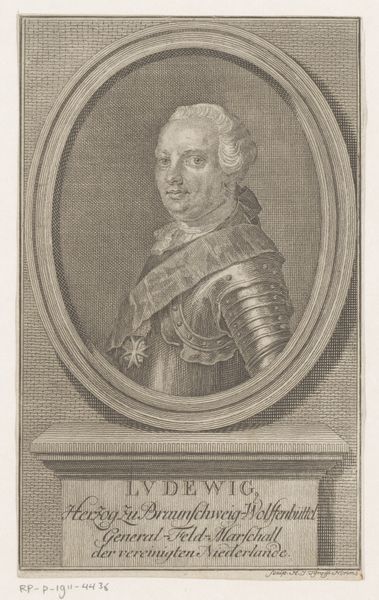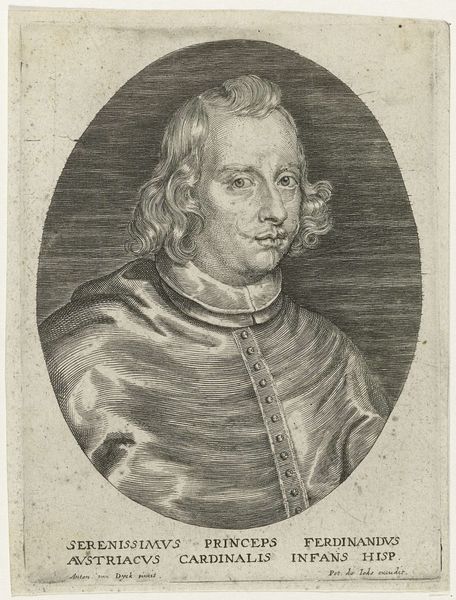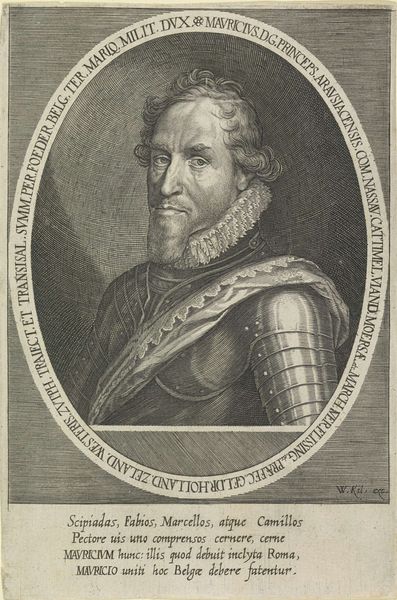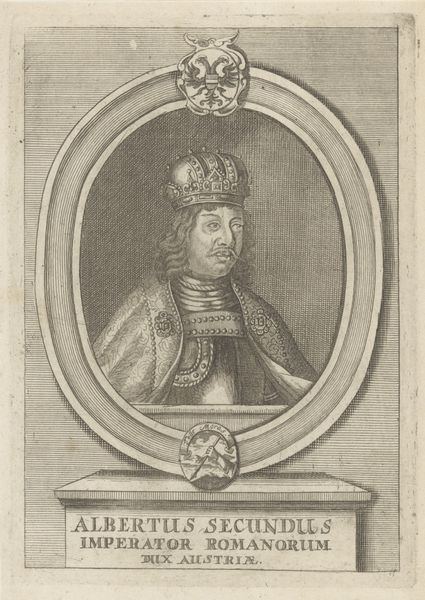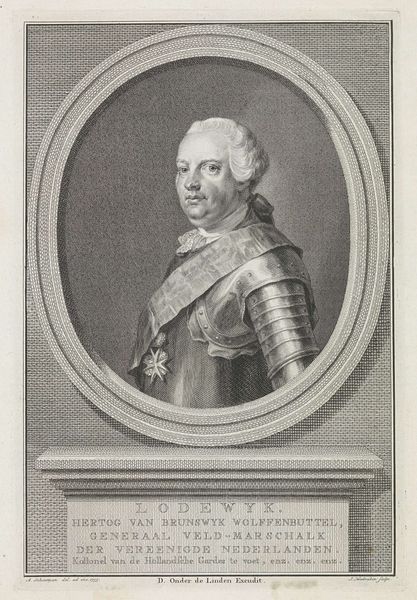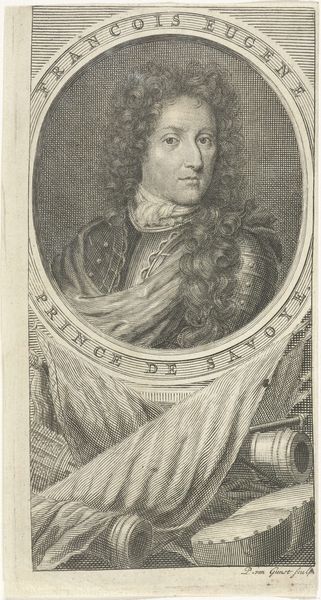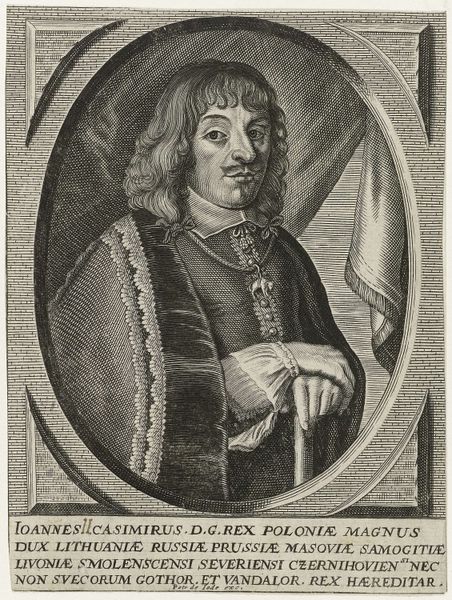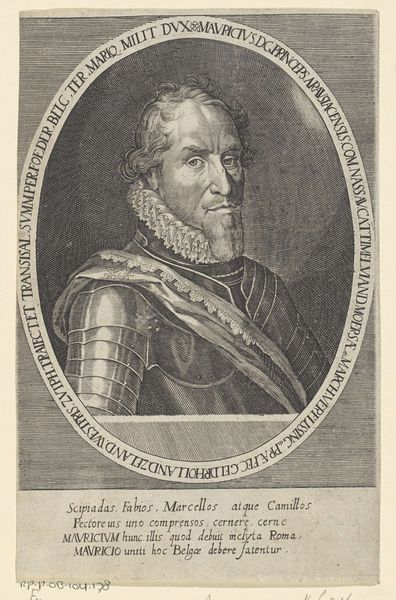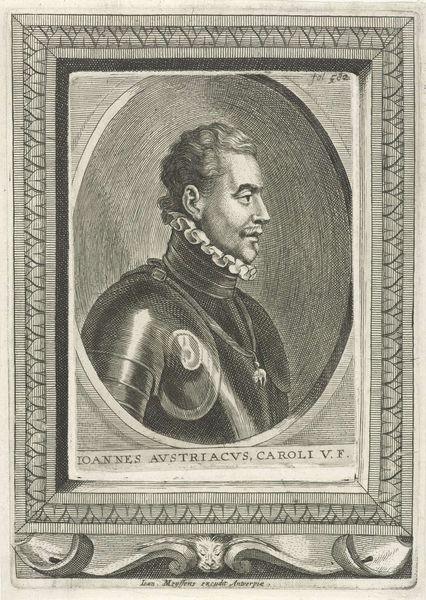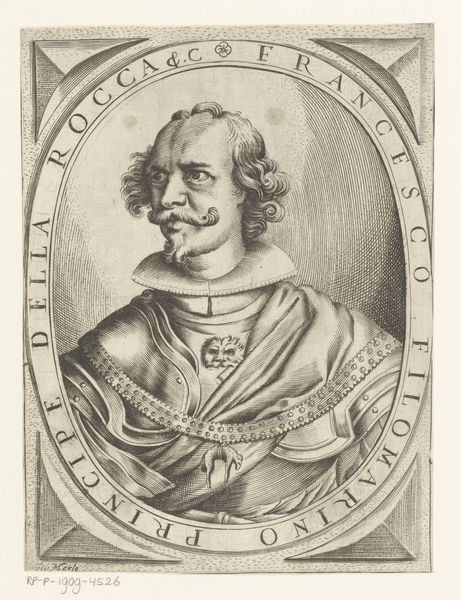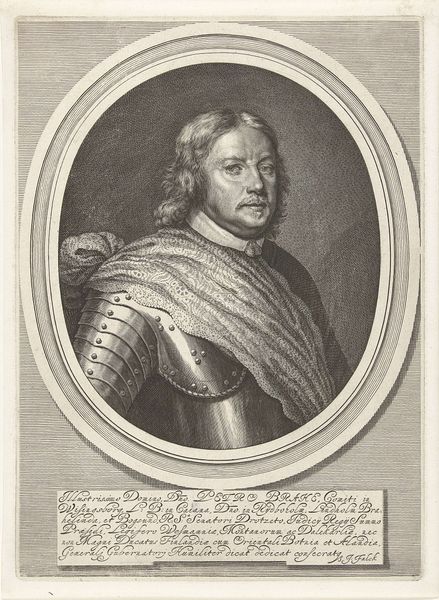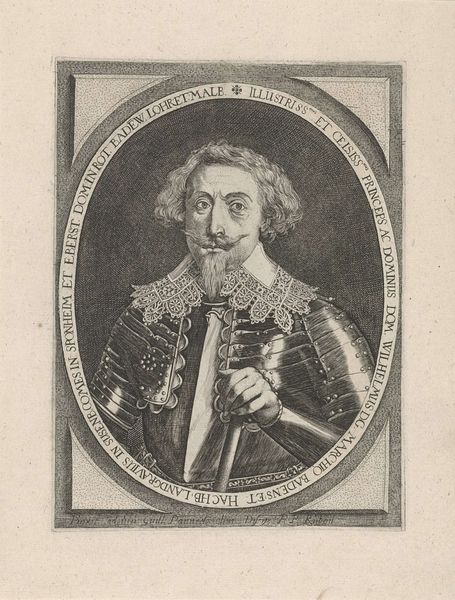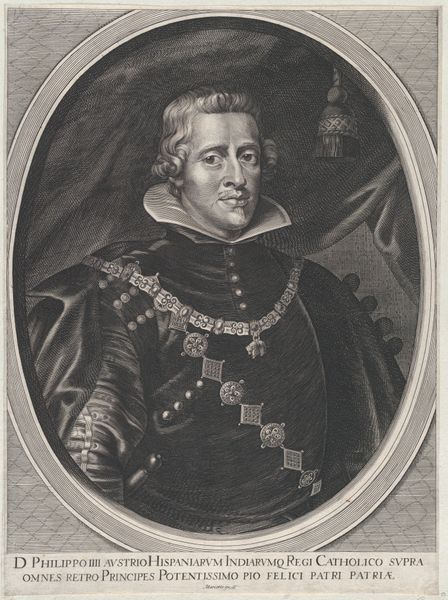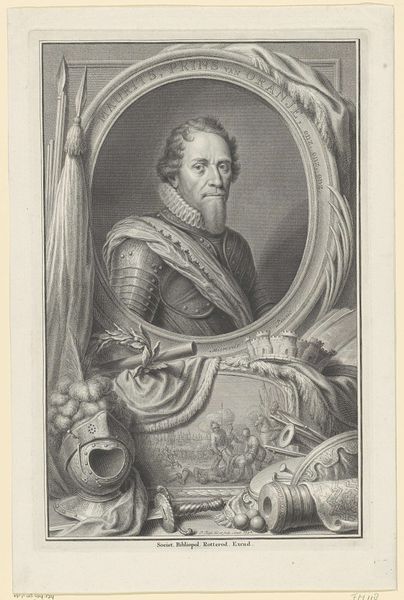
metal, engraving
#
portrait
#
baroque
#
metal
#
figuration
#
classicism
#
line
#
history-painting
#
engraving
Dimensions: height 166 mm, width 125 mm
Copyright: Rijks Museum: Open Domain
Curator: Looking at this detailed engraving, one senses the weight of history and power pressing down. Editor: Indeed, there’s a formality and a severity to it, even at this relatively small scale. But tell us more about the piece itself. Curator: We're examining Agostino Carracci’s "Portret van Francesco I Sforza", created sometime between 1585 and 1642. The piece resides here at the Rijksmuseum, a testament to the enduring interest in historical portraiture. It's made with an engraving technique on metal. Editor: Engraving, how interesting! The fineness of the lines gives him an almost marble-like quality, doesn’t it? Very classicizing despite its Baroque origin, I find. What strikes me immediately is the armour, signifying martial strength, but also suggesting defense, perhaps vulnerability. Curator: Armor becomes symbolic attire, reflecting the weight of leadership and expectation of the age. This wasn’t just a visual recording, but a statement of lineage and authority, carefully curated through symbolism like the insignia of nobility on his breastplate. The continuous lettering etched around the perimeter, serves to amplify this message. Editor: The choice of profile is also quite telling; it’s a classicizing element in itself. One is meant to see him as unyielding, strong in character. But that severity almost obscures a weary intelligence in his eyes. Curator: Absolutely, there’s an intended stoicism and strength conveyed through line and form. It’s interesting how historical portraiture always exists at the nexus of idealization and historical record, shaped both by the sitter's wishes and the prevailing style. Editor: Thinking about its placement in the Rijksmuseum, it becomes an artifact of art history. I mean, the artwork exists as much to portray this noble man as to show what elite society thought an ideal leader ought to be, centuries on. The engraving technique speaks of its period and its intent, very thought-provoking. Curator: The symbolism embedded is remarkable. Images like this aren't just records; they're conduits, conveying specific cultural values. Understanding those values adds another dimension to seeing these historical works. Editor: Ultimately, the piece acts as a symbolic record. This image remains a reminder of the artifice of power and the ongoing effort to craft visual legacies.
Comments
No comments
Be the first to comment and join the conversation on the ultimate creative platform.
